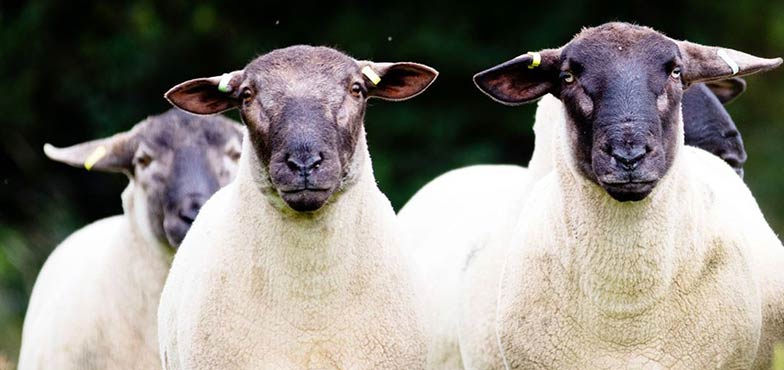
Taking on new ground always presents challenges, but moving a flock of 750 ewes and 300 ewe lambs from west Wales to the Scottish Borders has been a successful experience for the Innovis team thanks to forward planning.
Innovis chief executive Dewi Jones says the decision to move from Aberystwyth to Buccleuch Estate was made for a number of reasons, not least the high rents being paid in west Wales and the ability to increase market share in Scotland and the north of England for the company’s hybrid genetics.
“But moving the flock lock, stock and barrel came with its challenges, particularly as Southfield Farm, the flock’s new home, had been largely unfarmed for the last few years.
“That meant that much of the grassland was in poor shape, including the deferred hill grazing which the flock was due to be wintered on,” he explains.
To overcome that and understand the mineral and trace element status of the farm Innovis employed Chris Williams of ClinWil to take both soil and forage samples and provide recommendations for mineral and trace element treatments.
“We’ve used Chris for a number of years here at Aberystwyth to ensure we have the right mineral supplementation in place to maximise flock health and productivity, so it was a natural step to ask him to undertake the analysis at Southfield.
“Going in blind simply wasn’t a risk we were willing to take and it could well have meant we would have used supplements which were totally inappropriate and wasted both time and money in the process,” explains Mr Jones.
With a firm focus on following the science and relying on the best advisers to drive the business forward undertaking detailed analysis of both soil and forage is a key component of flock management, he adds.
“The importance of knowing what challenges the flock may have been facing cannot be underestimated. Analysis of the soil and forage at Southfield revealed some important issues which we have been able to overcome with appropriate supplementation with both mineral and trace element blocks and also feed blocks.
“One of the key findings was low protein levels in deferred grass which was to be the winter forage for the flock. This was a result of the grass not being well managed for a number of years. This meant we supplemented ewes over the winter with high protein feed blocks to ensure they maintained body condition and that lamb development wasn’t hindered,” says Mr Jones.
Along with that the analysis also revealed that the grassland was low in copper and zinc, with cobalt and selenium availability also below optimum levels, while manganese levels were at the opposite end of the spectrum and were far too high.
“This results in cobalt and selenium being less accessible in grass, further lowering availability of these key trace elements.”
Using these results Mr Williams has developed a bespoke mineral block for the flock at Southfield ensuring ewes are receiving supplementation to counter act the deficiencies found.
This approach is both sustainable and tailored to the situation on the ground, he explains. “Every farm and very often blocks of land within a farm is different. Using off the shelf products is all well and good, but very often it isn’t the most appropriate solution and can result in over or under supplementation because you’ve no idea what the animals need in the first place.
“By undertaking detailed forage analysis we are able to develop mineral formulations which counter farm specific issues. This avoids potential pitfalls and ensures only appropriate supplementation is being undertaken,” he adds.
Southfield presented a number of challenges, both in terms of the farm’s nutrient status and also former farming practices. Thanks to the analysis undertaken the flock there has been able to thrive through the winter and deliver a good scanning percentage, despite it being in a transitional phase, says Mr Jones.
“The mature ewe flock scanned at 175% which is on a par with previous years and ewes have lambed down in good condition and with plenty of milk too. Likewise, lambs have been born at a good size and with plenty of vigour, just what we want in our outdoor lambing system.”
Mr Jones adds that while there is a risk with free access minerals that not all animals take sufficient intakes to ensure they are well supplemented this is overcome by strategic use of drenches at key times of year.
“We drenched all the ewes pre-tupping to give them the best chance possible and also use a drench when transitioning lambs on to winter forage crops as this can be a stressful time for them as they move from a grass-based diet on to other forages,” he explains.
“This is very much a belt and braces approach and arguably could be overkill, but the drench is relatively cheap and ensures we don’t leave animals short of essential minerals at key times in the year.”
Importantly, says Mr Jones recent innovation from ClinWil in developing blocks which are free of plastic packaging has increased the environmental credentials of the product. “It might seem a small thing, but it is something we have been keen to move away from as much as we can and these new paper wrapped blocks are a great innovation and remove another source of plastic from the environment.”
